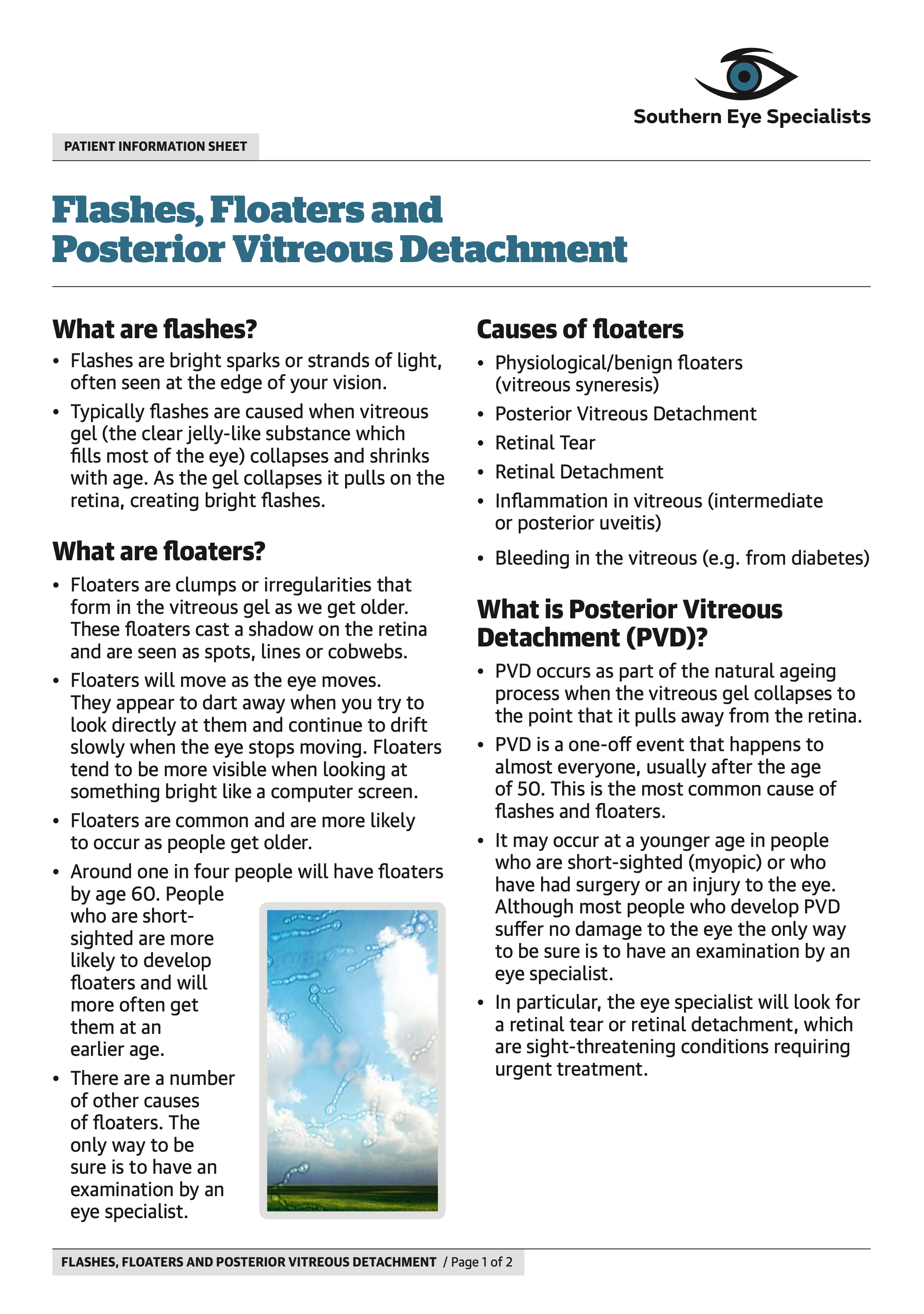Eye Conditions
Retinal Detachment
Retinal detachment, while uncommon, is a serious eye condition that can lead to severe vision loss if left untreated. Typically occurring in the middle-aged and elderly, treatment of retinal detachment will always require eye surgery.
The retina is the light-sensitive layer at the back of the eye that sends images to the brain. A retinal detachment occurs when the retina separates from the eye wall, typically caused by a hole or tear within the retina.
Flashes of light, the sudden onset of floaters (little dark spots/lines/specks in your vision), a dark shadow in the peripheral vision, and sudden loss of vision can all be symptoms of retinal detachment.
Retinal detachment is a serious issue, and the best chance of saving your sight is to seek medical help urgently. There is a range of surgical options that may be used to address retinal detachment, which your eye specialist will discuss with you.
Urgency
Retinal detachment requires urgent medical attention. The sudden onset of symptoms such as flashes and floaters, sudden loss of sight, or an enlarging shadow in the peripheral vision may be a warning sign of retinal detachment.
Causes
Some people are more susceptible to retinal detachment than others, including those with a family history of detachment, a previous detachment in the other eye, a previous eye injury, and patients who have previously undergone cataract surgery.
Surgery
There are several different surgical procedures and techniques that can be employed to re-attach the retina and seal the retinal hole and treat retinal detachment.
FAQ’s
What causes retinal detachment?
A retinal detachment is caused by a tear of the retina. Retinal tears are most commonly caused by a process called posterior vitreous detachment (PVD). This can occur spontaneously in people who are short-sighted (myopic) or after an injury to the eye.
PVD is the final stage of the ageing process of the vitreous gel the fills the main cavity of the eye. The vitreous gel collapses to the point that it pulls away from the retina, often causing flashes and floaters. Although most people who develop PVD suffer no damage to the eye, in some cases the vitreous gel will not separate cleanly and pulls on the retina, causing a tear to occur.
What is the treatment?
There are several different surgical procedures that can be employed to fix a retinal detachment, with many factors contributing to the choice of which technique to employ. The most common technique is vitrectomy surgery but other options include pneumatic retinopexy and scleral buckling surgery.
Do floaters mean I have retinal detachment?
Flashes and floaters are a common sight for many people and don’t necessarily mean retinal detachment. A ‘floater’ is a catch-all term for the specks, threads, or cobweb-like images that occasionally drift across the line of vision. Flashes are sparks or strands of light that flicker across the visual field. Both are usually harmless. However the sudden appearance of new or increased flashes and floaters are strong reasons to see your eye specialist urgently.
What are the symptoms?
Symptoms of retinal detachment include flashes of light, sudden onset of floaters (little spots like specks of dirt in your vision), a new dark shadow in the peripheral vision, and sudden loss of vision. If you experience any of these issues, it is advisable to seek urgent medical attention.
